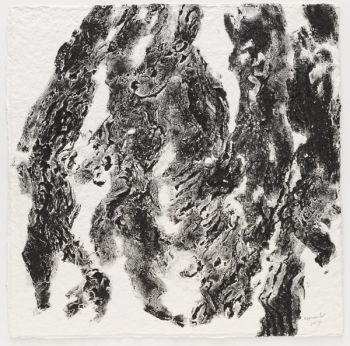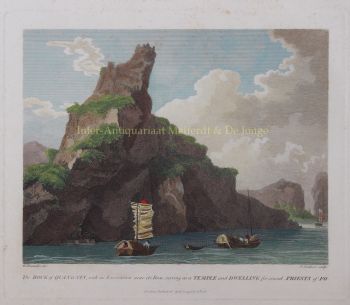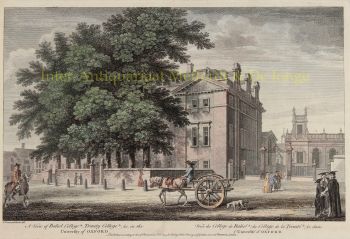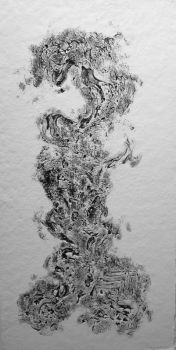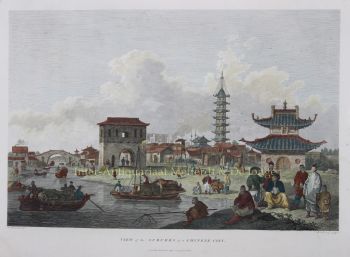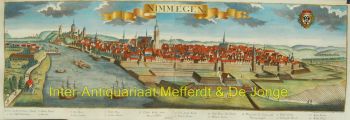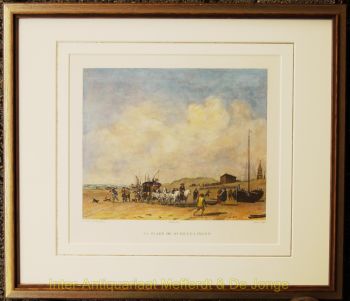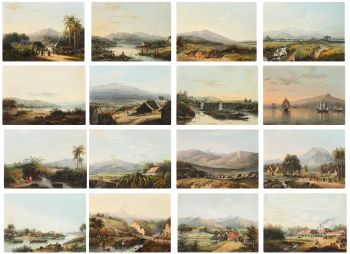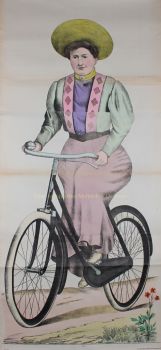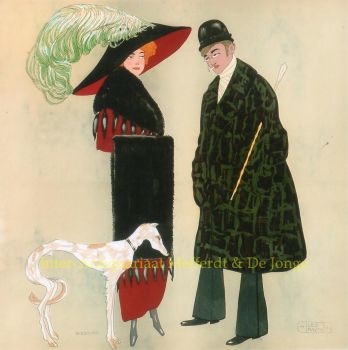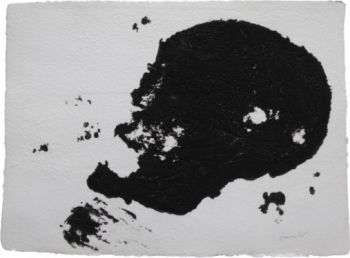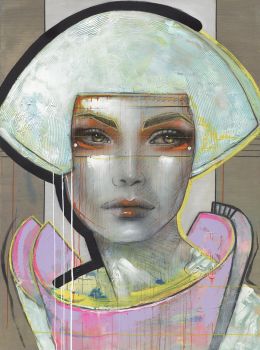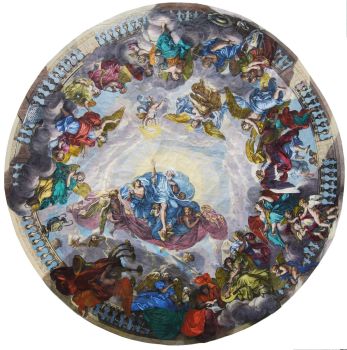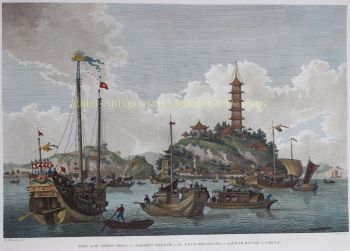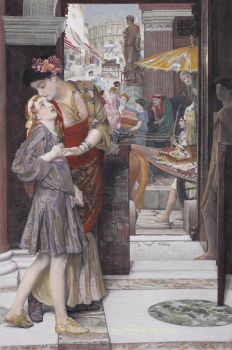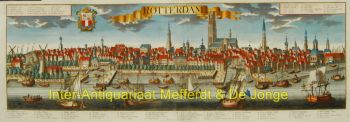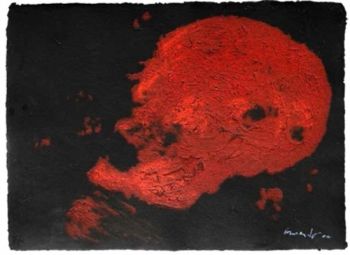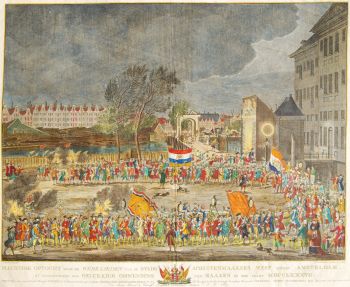What determines the value when buying original fine art prints?
Interest in 'original' fine art prints' has grown exponentially in recent decades, among the public, artists and galleries alike. Unfortunately, this increasing public interest is also being abused. Reproductions are sometimes sold as real fine art prints. And more and more apparently 'original' prints are being sold at high prices. In this article we want to show you how you can check the value of graphics yourself and how you can recognize whether an etching, engraving, lithograph, stone- or screenprint is original or not.
When are fine art prints actually 'original'?
First of all 'fine art print' is a collective name for all kinds of art that is made by means of a printing technique. The images created by the printing technique are called simply prints.
Because the prints are made with a printing technique, it is possible to repeat the printing process, which always creates the same print with the same image on it. The most important graphic printing techniques are: relief, intaglio, planographic, screen, photographic and computer printing. In our latest article about printmaking you can read exactly what the difference is between the different printing techniques.
In the case of an 'original, fine art print' the artist has specially designed a concept in which the intended image is applied repeatably to an image carrier of his choice with the aid of one or more printing forms'.
In the last century engravings were often made after well-known paintings. That was accepted at the time. If that happens now, we don't call it original, but 'reproductive' prints or reproductions.
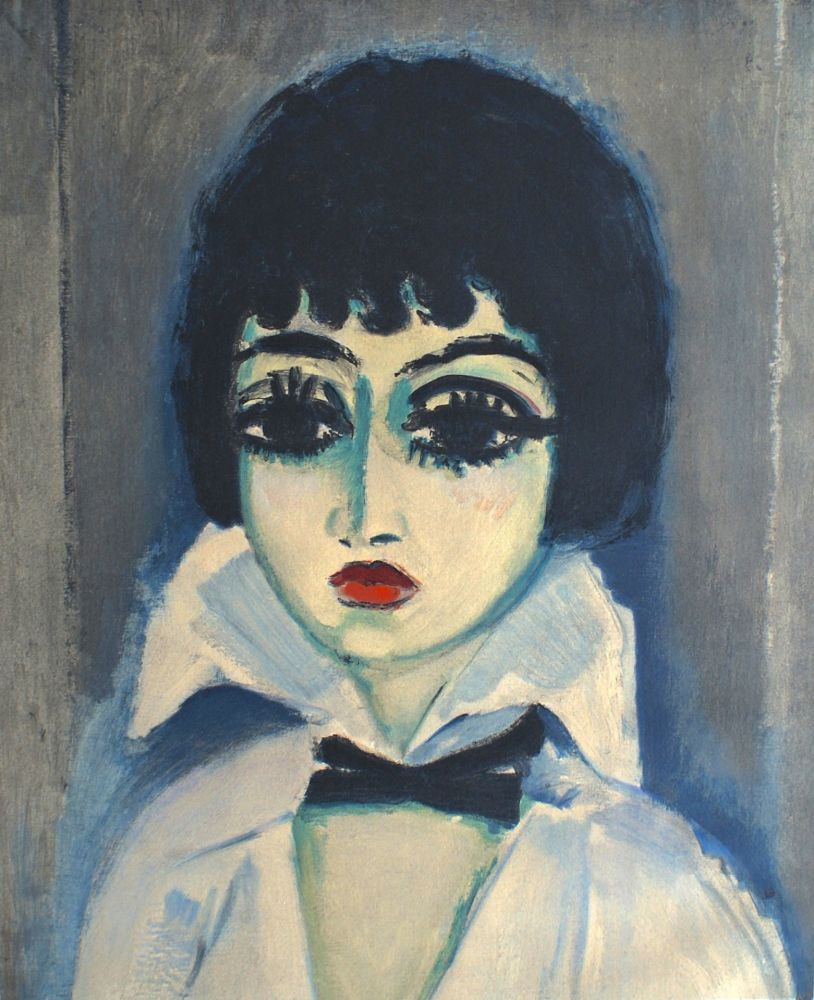 Lithograph by Kees van Dongen 'Marcelle Leoni' 1959
Lithograph by Kees van Dongen 'Marcelle Leoni' 1959
What factors determine the value of fine art prints?
Original lithographs, serigraphs, etchings and engravings are nowadays for sale for a few tens to a few hundred thousand euros in rare cases. The price of an original lithograph depends on many factors. Below we list the most important factors that can determine the value or price of graphics and prints.
The art (historical) significance and period
There is of course a difference in value that can be attributed to the significance that the artist in question has had on (art) history or an artist who is relatively unknown and who has had less talent or impact. Often, the older the print, the greater the chance that the artist himself was involved in making the print.
An original etching by Rembrandt himself from that time and printed by himself naturally has more value than that of a lesser-known artist or if it concerns a reprint from two centuries later.
 Etching by Rembrandt van Rijn 'Self-portrait with Saskia', 1636
Etching by Rembrandt van Rijn 'Self-portrait with Saskia', 1636
Original copies and deviations
Prints are not always simply reproductions, although they sometimes seem that way. It is also not always possible to publish several editions. In fact, many artists work with printing techniques to create just one original work. These pieces are worth the most because when it comes to art, people value originality and uniqueness.
Sometimes prints show deviations. This can happen, for example, if slightly different colors are used, or if they are hand-finished by the artist. Within limited editions, these prints are extra valuable because they are unique and rare.
Printing technique, the list & used materials
Each printing technique requires different materials and processes, which means that the results differ. For that reason, the different techniques also influence the value. More labour-intensive techniques result in more valuable prints. For more about the different printing techniques, see the following article.
The materials used in the manufacture of the work also affect its value. Prints on fine papers such as Hahnemühle and archival paper are usually worth more. A print printed on aluminum, bamboo or plexiglass is often more special than a print on 'ordinary' paper.
With lithography (unlike with etching) the quality of the first print is not substantially different or better than the last print. Not much more than a hundred good impressions can be made from an etching plate, much less from a drypoint plate. Then the plate is worn out unless it has been 'steeled', which only rarely happens. Other printing techniques allow virtually unlimited print runs.
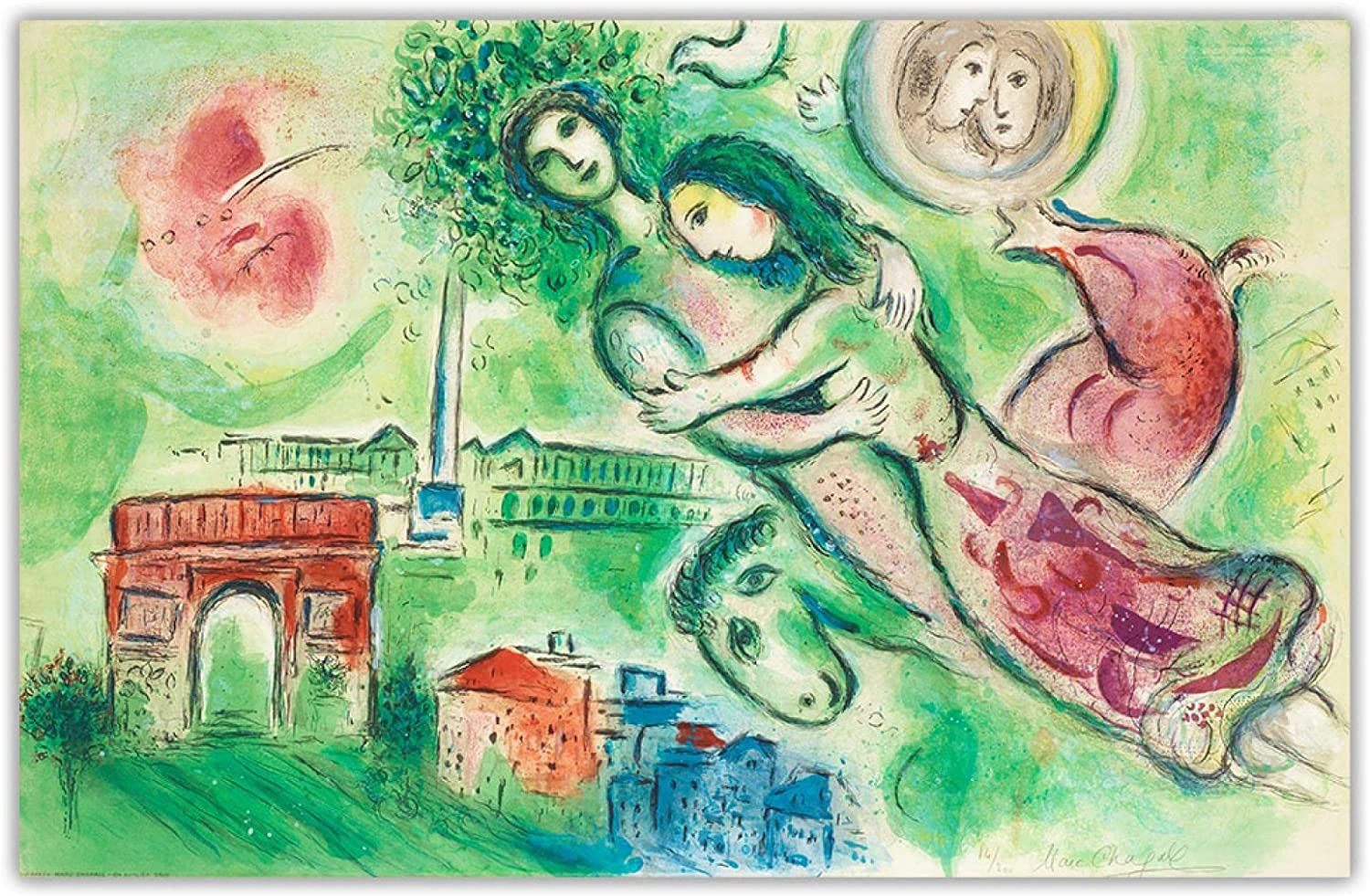 Lithograph by Marc Chagall, La flûte enchantée (The Magic Flute), 1967
Lithograph by Marc Chagall, La flûte enchantée (The Magic Flute), 1967
Quality of the print
Prints are generally fragile works of art. They may be affected by direct light or may become scratched or cracked. A frame helps to protect the print. If the work is already quite old, but has always been framed, this is a good indication that it is still in good condition.
A print enemy par excellence is too much acidity. Between the years 1955 and 1980, due to ignorance, too little attention was paid to this. Paper with too high an acidity was then often used and pages were fixed with too acidic adhesive tape or glue in passe-partouts that were too acidic. The result is that the paper is affected. A kind of brown yellowishness eats into the paper and seems to fade away. ,
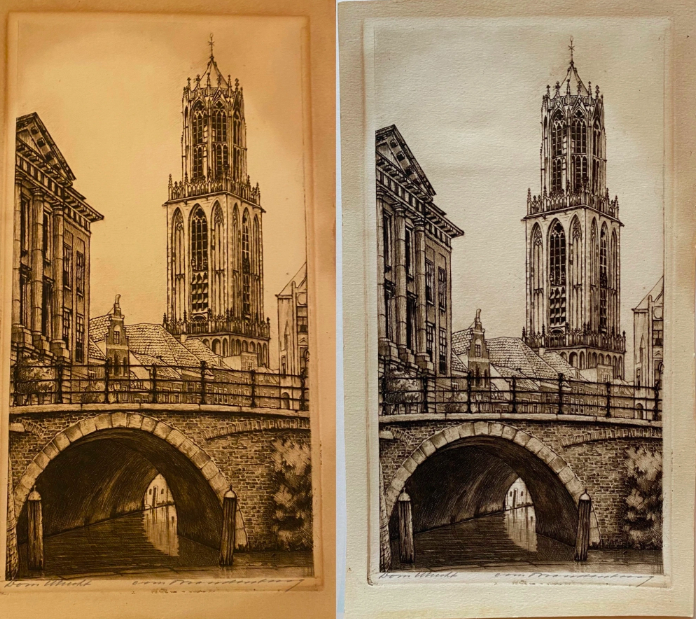 On the left, an old engraving of 'acidified paper' and on the right the result after restoration (washing)
On the left, an old engraving of 'acidified paper' and on the right the result after restoration (washing)
Size, black and white or color
The dispute among graphic artists whether prints should contain colors has raged. People no longer fight each other's preferences. One only uses black ink, the other uses multicolored. It depends on one's own artistic views. Just like in the past, prints are sometimes colored by hand, usually with watercolor. Some find such a mixed technique hardly pure, others are unconcerned in this respect.
A print with many colors is generally almost always worth more than a black and white print. Size also matters. More skills are required to make larger prints. Therefore, they are generally more valuable and rarer.
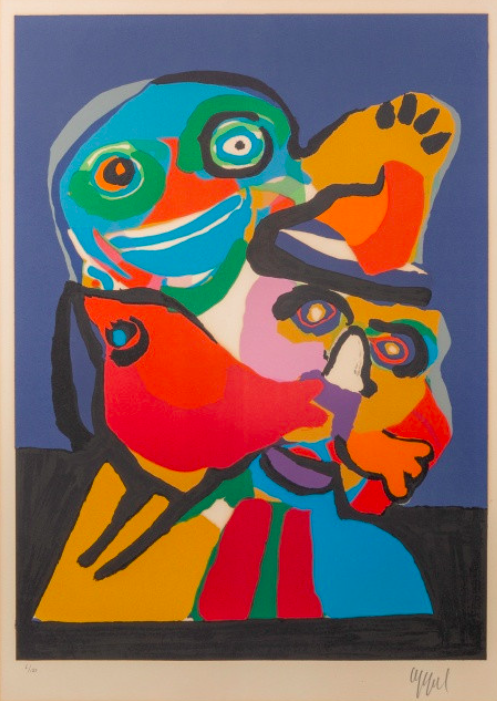
Lithograph by Karel Appel, Abstraction, 1960 - 1970
Signature, monogram & watermark
In the past, nothing was written under a print. At most, information about the designer, engraver and printer was added to the lower edge of the printing form and printed along with it. Nowadays, a monogram or watermark of the graphic artist is sometimes printed or stamped into the paper, also known as an embossing. And a few still add their signature to the printing form.
 Example of an 'embossing' and a printer's monogram
Example of an 'embossing' and a printer's monogram
To determine the uniqueness and authenticity of a print, it is important to determine whether the artist (or the etcher or engraver) signed the work himself or whether the signature was included in the printing process (in the plate).
With a hand-signed version you know for sure that the maker has seen the work himself and has been closely involved in the production process and more importantly, that the work of art received the approval of the artist at the time to be shown to the world. As a result, in most cases a hand-signed copy is worth more than an 'unsigned' version or one that has been signed in the plate.
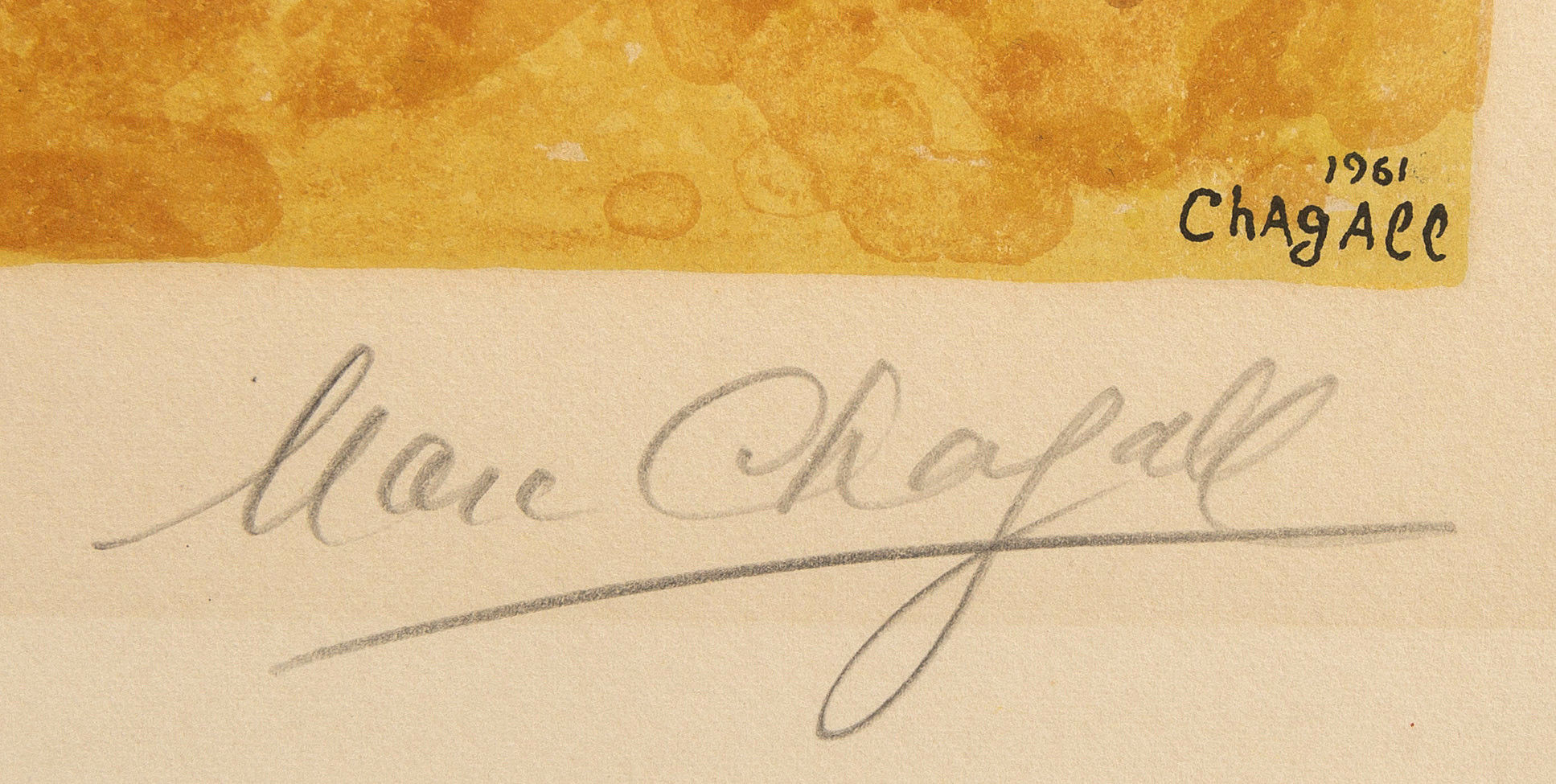 Example of a lithograph by Marc Chagall with both hand-signed and signed in the plate
Example of a lithograph by Marc Chagall with both hand-signed and signed in the plate
The exclusivity; print, circulation and edition
A very important factor for the value of an art print is the 'exclusivity' of the printed work. So it is important how many prints have been made and can more be printed in the future. The edition or print run of an art print is one of the most important factors in determining its value.
If many people own the same work, this lowers the exclusivity and therefore the price. With a high print run, there is also less chance that the artist was directly involved in the production of each copy.
Because there are differences between print runs, editions and the differences in types of printing, we will discuss this in more detail in this chapter.
 A silkscreen by Tom Wesselmann, Bedroom Face, 1977
A silkscreen by Tom Wesselmann, Bedroom Face, 1977
Difference between print, print run and edition
The individual sheet created by the printing process is called a "print". The total number of prints within a series is called the "run". If more print runs are made with the same printing plate at a later date, this is referred to as editions.
The artist has the prerogative to determine the edition. In the past, the wear of the printing plate itself limited the quantity of the printing chart to a relatively small number. Usually between 20 and 100 impressions can be made from a zinc or copper plate. However, since the arrival of steel printing plates, a very high print run is possible.
Once the prints have been made, it is common practice to render the printing plate unusable, for example by cutting several crossed lines across the image on the plate. However, the plates of some well-known artists, such as Francisco Goya, have been preserved and a new series of prints were or are being made at a later date, even after the artist's death. In this case one speaks of “editions”, with the original editions being the most valuable.
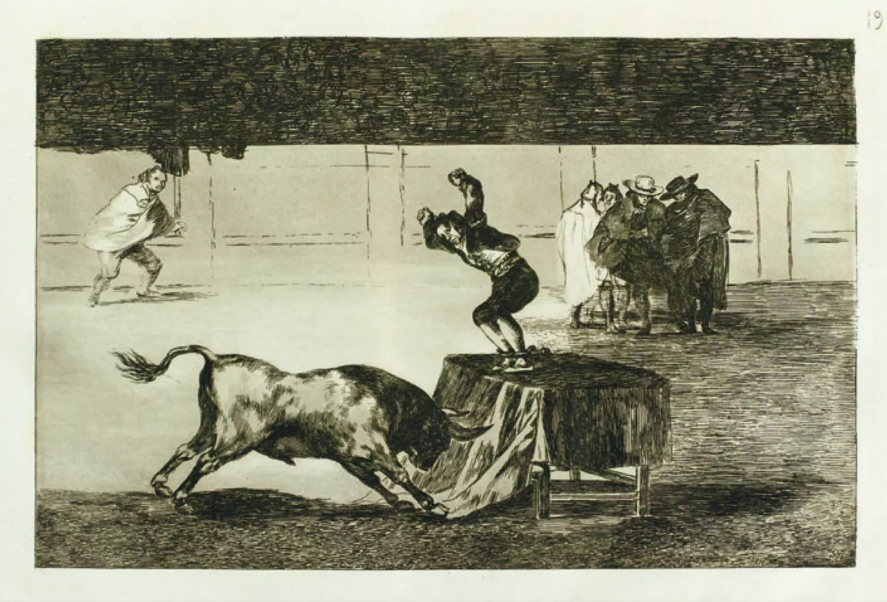 A printing print by Francisco de Goya, La Tauromaquia, 1816
A printing print by Francisco de Goya, La Tauromaquia, 1816
Numbering within an edition
In a limited edition, the artist usually notes on each print (not on the printing plate) manually in pencil his or her name and the print number with the total number of regular prints in normal numbers behind a slash.
The pencil is used because a pencil signature is difficult to erase or change without damaging the paper fibers. The signature is usually in the lower right corner, the print number and edition in the lower left corner. The title of the print, if any, is usually in the center.
When a limited edition art print comes out, the number within the edition doesn't really matter for the value. The value of number 90/100 is not different from that of 2/100. An exception applies to the very first printing of the edition, for example 1/100. This is usually more sought after by collectors and therefore has more value than the other numbers.
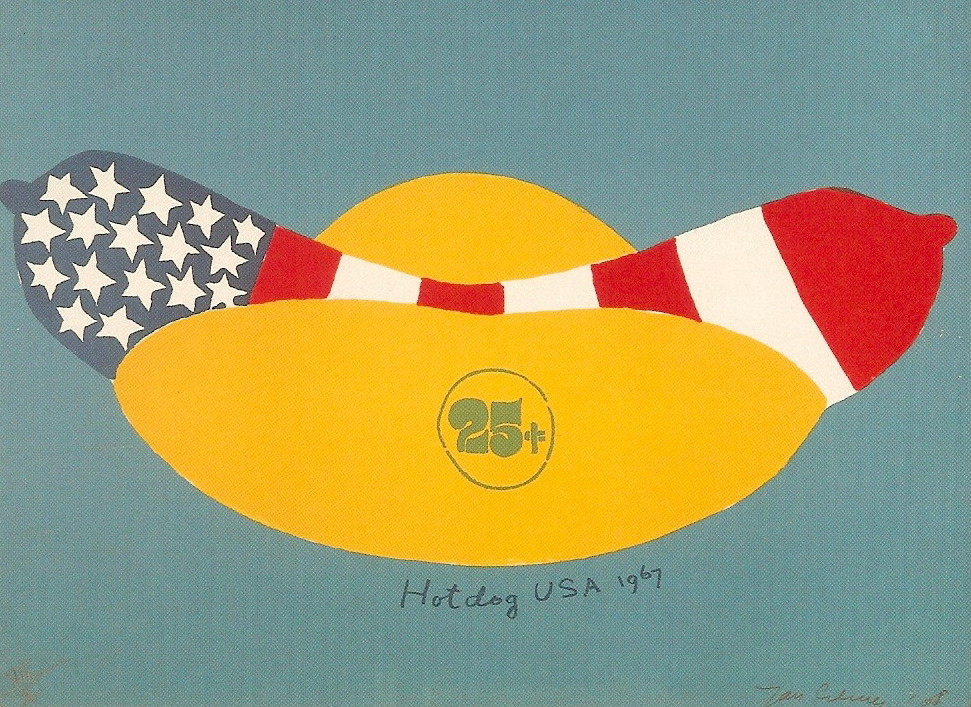 Lithograph by Jan Cremer, HOT DOG II, 1969
Lithograph by Jan Cremer, HOT DOG II, 1969
Trial Proof (TP), Epreuve d'artiste (EA) or Artists proof' (AP)
The edition is therefore usually indicated on the artwork. However, the actual circulation is usually larger than this number. That's because, in addition to the regular prints, artists often first make proofs. These proofs do not officially count in the print run.
Sometimes the artist is still discovering what he/she likes best and what works best. These are often unique prints that differ from the edition. This also makes them worth more. These proofs are called 'trial proofs' and are often referred to as 'TP'. Other names for these proofs are also 'épreuve d'artiste (EA) or 'artists proof' (AP).
 Example of a Trial Proof (TP) of a serigraph by the famous pop artist Andy Warhol
Example of a Trial Proof (TP) of a serigraph by the famous pop artist Andy Warhol
Officially, these proofs often show the print number and edition number in Roman numerals, and personal prints by the artist are often unsigned without numbering.
Officially, the number of proofs may not exceed 10% of the total print run. Because of the limited supply of these 'trial proofs' and because they say something about the artist's original ideas and working method, they are also usually priced higher than the other prints.
Hors Commerce (HC) and Bon à Tirer' (BAT)
To make it even more complicated, in addition to the normal edition and the proofs, you may also encounter a 'bon à tirer' print (BAT), this is a print selected by the artist (screen print, lithograph, etching, giclée, etc.) which serves as a 'standard' for the print run.
Furthermore, there are also prints that are only for the artist himself the so-called, 'outside the trade' hors commerce (HC), so these are in principle not intended for sale.
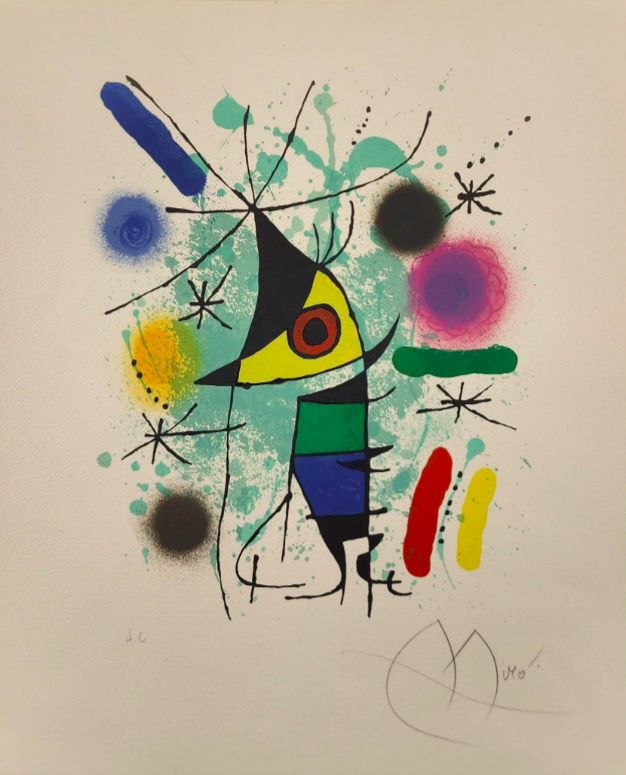 Example of a signed Hors Commerce (HC) lithograph by Joan Miró
Example of a signed Hors Commerce (HC) lithograph by Joan Miró
Tips to recognize reproduction and counterfeits
The increasing interest in graphics is also being abused more often. Reproductions are regularly sold as real prints. At often high prices apparently original graphics are advertised that are not at all.
And sometimes they want to give the impression that a limited edition is being offered while printing continues while demand lasts. You can warn against such practices, but just like in the antique trade, cheating cannot be completely prevented here either.
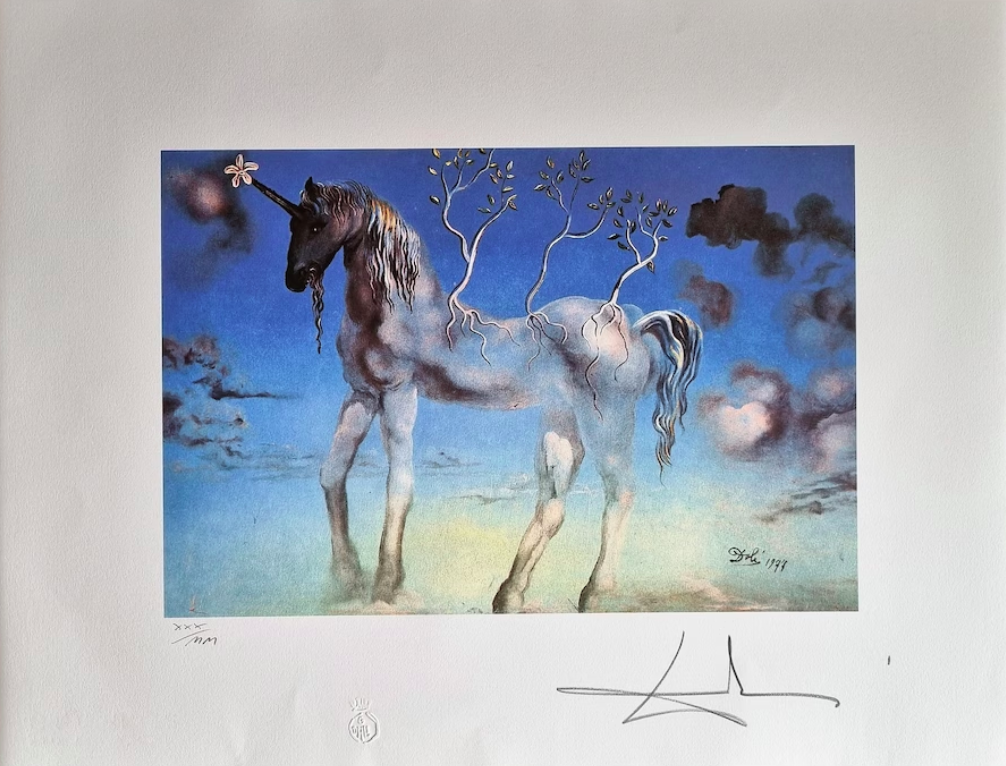 Example of lithographic reproduction of 'The Happy Unicorn', Salvador Dalì
Example of lithographic reproduction of 'The Happy Unicorn', Salvador Dalì
A tip to do your own research could be to put the print under a magnifying glass and feel it. With a magnifying glass you can see how the work was made. With a wood engraving, etching or linocut, the paper will often be slightly pressed. With a screen print you see that a work is made up of different layers of color. With all graphics, note the vibrancy of color and quality of black lines.
Another tip could be to smell the print. Paper, paint, wood: everything has a smell. A lithograph from 1930 or earlier should smell a little sour and in any case not like fresh printing ink.
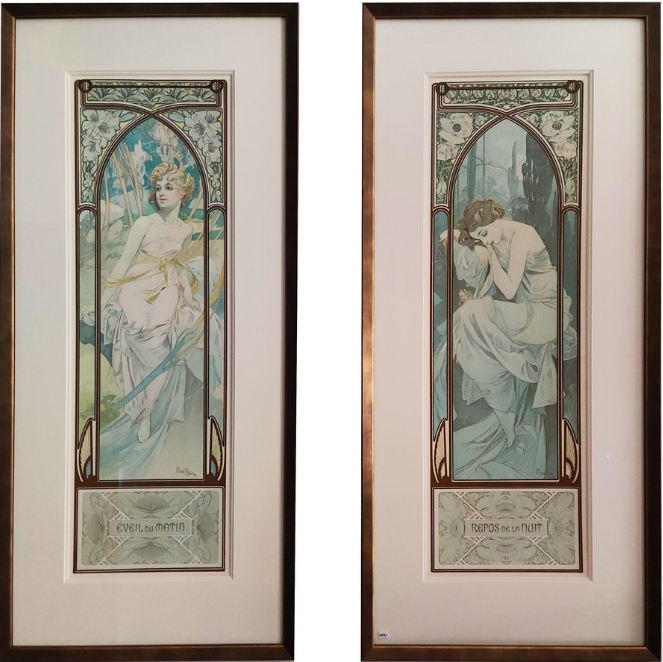 Art Nouveau lithograph by Alphonse Mucha, 'Les heures du Jour', 1899
Art Nouveau lithograph by Alphonse Mucha, 'Les heures du Jour', 1899
Buying graphics or printing art
When fraud of a print was really intended, it is usually done with so much sophistication that it can only be brought to light after expert investigation. However, cheating only pays off when it comes to the work of famous artists.
In such a case, only an analysis of the ink and the paper can provide a definite answer about the time in which the print was printed, but yes, if paper from the same period was also used, a paper analysis does not provide any certainty.
At Gallerease we only work with renowned galleries and art dealers that are affiliated with well-known trade associations. This allows us to guarantee that the print art you buy here is actually original. If you would like to view our collection of prints or graphics, you can do so via the following link.
* In the header you see a hand-colored heliography by Sir Lawrence Alma-Tadema after the painting of the same name 'Unconscious Rivals, 1893



